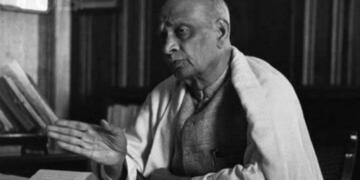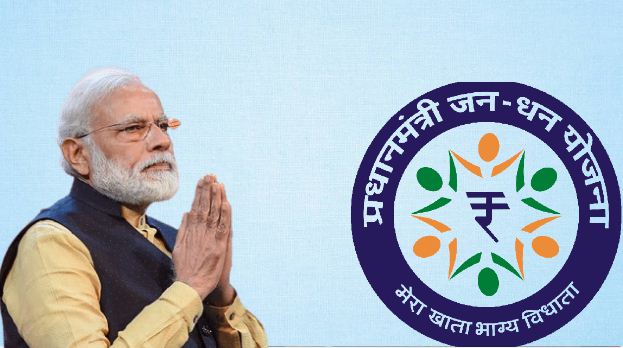The long term thinking by PM Modi behind Jan Dhan Yojana has started to bear fruits now. The latest Ecowrap report by the State Bank of India suggests that the financial inclusion scheme launched in 2014 is effective in reducing the crime rate in the country.
Jan Dhan reduced crime- SBI
In a research report, SBI, a state-owned multinational bank has come up to the conclusion that the use of drugs, alcohol and other abusive substances have declined in the states where Jan Dhan Yojana has been successful. Correlating the low crime rate and high Jan Dhan account, the report states, “This could be because of Jan Dhan-Aadhaar-mobile (JAM) trinity, which has helped in better channelising of government subsidies and helped in curbing the unproductive expenditure such as alcohol and tobacco expenses in rural areas. Estimated results indicate that rise in the number of Pradhan Mantri Jan Dhan Yojana (PMJDY) accounts and balance in these accounts lead to a significant fall in crime,”
The report further mentions how India has leapfrogged ahead of China in financial inclusion, but it also cautioned that the business correspondent model needs an improvement to make more inroads into the villages. The report also appreciated Public sector banks for leading the efforts towards financial inclusion.
Before Jan Dhan, the poor were crushed in the generational cycle of hopelessness
Earlier successive governments had launched various schemes to provide benefits to the poor in the country. These schemes were mainly meant to distribute foodgrains, kerosene oils, clothes and money to make houses. All these schemes failed in a big way. The main reason behind the failure of these schemes was that the distribution system involved a middleman who took his/her commission from the government but did not give it to the people. Since most of the people were illiterate and not aware of their rights and schemes, middlemen kept getting richer while the poor kept getting poorer.
Read more: Did Modi really insult India?
Things started to change from 2014
As Prime Minister Modi came to the helm of affairs in 2014, he launched Jan Dhan Yojana which allowed anyone above 18 years of age to open a bank account in which they could deposit money according to their convenience. Earlier, a customer had to maintain a certain minimum balance to keep his account active, this condition was waved by the government for the Jan Dhan account. PM Modi, who himself comes from a humble background and has run his magic in developing Gujarat was very well aware of the fact that Indians have a huge propensity to save their money. Since the poor did not have much to save into high maintenance bank accounts, they spent it on other activities which kept them poor for generations. Now, as the accounts opened, people were automatically nudged by their own psychological schema to send their smallest of savings into the bank account to save money for future contingencies.
Poor people were soft targets for violent gangs like Maoists and Naxalites
This is where Jan Dhan accounts’ role in reducing the crime rate in the country needs to be credited for. One of the reasons why crimes like robbery, thefts, dacoities, smuggling, murders, gang wars take place is because the societies in which these take place are financially backward and distressed. Financial sufferings, joblessness, lack of opportunities become a happy hunting ground for criminal organisations like Naxalites and Maoists to heir people into their ranks.
If not outside, crimes used to take place behind the four walls
The aura of hopelessness, distress and disorder due to lack of money tends to send poor men into the dirt of tobacco and excessive alcohol consumption. These habits naturally translate into domestic violence on women and children of the family.
Saving accounts helped people to develop confidence in the state and its machinery
However, once people started to save money, new hopes transpired into their lives, as their serotonin level went up which helped them in a big way to realise that they could now fight with the system which had kept them on the brink due to its corrupt practices. With the opening of bank accounts, various new ways opened for them. Now bureaucracy was not rude to them, they did not have to pay extra cash to garner benefits from the government schemes meant for them. People now started to get their MGNREGA payments, gas subsidies, money for constructing their houses into their own bank account, from which they had the freedom to withdraw it from any time they wanted. Simply put, the extra cash they saved in their Jan Dhan accounts helped them in developing a cycle of trust with the system.
Read more: The success story of Jan Dhan Yojna is out and its a lesson in financial inclusion.
As people garnered confidence with the system, their hopes from life increased many-folds. As their standards of living improved, people became less anxious, as they knew that they had a system to support them in time of contingency.
Read more: Jan Dhan Yojana, yet another success story of Demonetization
As of October 2021, deposits worth over 1.4 trillion Indian rupees in Indian banks were connected to the Jan Dhan accounts. These accounts have been mainly responsible for seamless transfers of benefits like remittances, credit, insurance and pensions into the bank accounts.Jan Dhan helped the government to streamline schemes
The connection of Jan Dhan account with Aadhar card and Mobile benefitted the government in one more way. Before 2014, various governments were never able to decipher the exact amount of poor people in the country, simply because there was a lot of data-fudging by data collectors. The enabling of fingerprint-based Aadhar cards for the bank accounts ensured that government could monitor the people and their savings. The availability of the improved data helped the government in launching suitable schemes for the target population.
Read more: The Jan Dhan Yojna now helps over 34 crore people cope with the uncertainties of life
Some successful schemes which owe their success to Jan-Dhan
Riding on the JAM trinity, the government has been able to successfully transfer various benefits under different schemes directly to beneficiaries bank accounts. These transfers are known as Direct Benefit Transfers(DBT)
- The successful disbursal of money for the construction of nearly 40 lakh affordable houses under Pradhan Mantri Awas Yojana owes mainly to the accounts opened under Jan-Dhan Yojana.
- The MGNREGA payments, which mainly go into the accounts of poor people are now being received directly by the beneficiaries in their own accounts.
- Various insurance schemes like crop insurance, health insurance schemes are also riding on the back of JAM trinity.
- Similarly, the government directly transfers subsidies into the bank account of beneficiaries, who avail gas connections under the UJJWALA scheme.
As the savings account opened, it became easier for the government and banks to sanction their loans for various purposes. Now, the person who wished to be an entrepreneur but did not have the resources to launch himself into the market, could take a Pradhan Mantri MUDRA Yojana (PMMY) loan through his savings account and land his generation into a better echelon of the society within a short span.
PM Modi has changed the fortune of millions of poor people in the country within a 7-years span, which the Congress government could not achieve in 70 years. It’s incredible how a small step such as opening a bank account can transform the country’s fortunes.





























